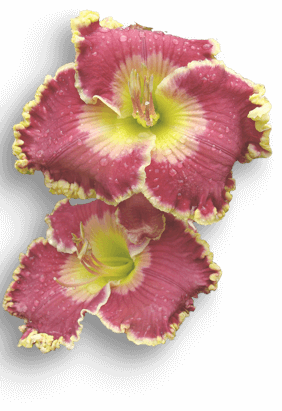In botany, the term “beard” refers to a group of hairs or trichomes (external link). It may also refer to an awn, e.g. the bristle-like projection from a grain such as barley. This type of structure is not found on daylilies therefore, in order to be consistent with established botanical terminology, the term “beard” and its derivatives are not accepted by the American Daylily Society and are included in this dictionary only for reference.
Some examples of bearded plants include Penstemon barbatus (beardtongue), Campanula barbata (bearded bellflower), Crassula barbata (bearded-leaved crassula), some orchids such as Coelogyne barbata (bearded Coelogyne), as well as various iris cultivars and species such as I. pallida (Dalmation iris).
See also: Cristate
Click on thumbnails below for larger views of two examples of plants named for their hairs:
Beardtongue, Penstemon barbatus ((Cov.) Roth 1806). Photo by Sten Porse
Cropped from original. Licensed under CC BY 2.0
Bearded bellflower, Campanula barbata (Linnaeus 1759). Photo by Hectonicus
Cropped from original. Licensed under CC BY-SA 3.0
References:
Harris, James G., and Melinda Woolf Harris. Plant identification terminology: an illustrated glossary. No. QK9 H37 2001. Utah: Spring Lake Publishing, 1994.
Lindley, John. A glossary of technical terms used in botany. Bradbury and Evans, 1848.
Martyn, Thomas. The Language of Botany: Being a Dictionary of the Terms Made Use of in that Science, Principally by Linneus... J. Davis, 1796.
Payne, Willard W. “A glossary of plant hair terminology.” Brittonia 30 (1978): 239-255.
Stearn, William Thomas. “Botanical Latin.” Botanical Latin. Ed. 2 (1973).



